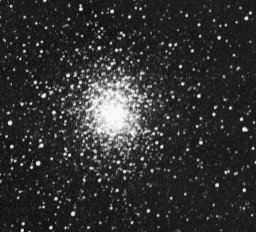Current Info for Observer
as of 07/27/2024 4:11 a.m.
Please login to view current observation details
General Info
| Type | Globular Cluster |
| Constellation | Ophiuchus |
| Right ascension | 17h2'37.700'' |
| Declination | -26°16'5'' |
| Magnitude | 6.800 |
| Distance | 27,100ly |
| Size | 13.500 arc min |
| Catalog Designations | NGC6273, M19 |
| Discovered | 1764 Charles Messier |
Generate a finder chart
The following form will generate a PDF finder chart suitable for printing using to locate objects in the sky with your telescope!
The Date is only really useful for solar system objects, as deep space objects move measurably only on a galactic timescale.
The larger the F.O.V (field of view), the more "zoomed out" the object will appear. It can be helpful to print several charts of the same object with different field of views.
Limiting the magnitude (remember, lower magnitude means brighter!) of stars and objects can make sure your chart is not cluttered with dim objects that you may not be visible to you anyway. The defaults are good, but try experimenting with raising and lowering the values.
Orion 10XTi
20 points
Appeared as a faint, gray area. Power was out around me making it possible to find.
Hardin 8" Deep Space Hunter
20 points
Orion 10'' SkyQuest dobsonian
20 points
As I scanned North -> South looking for the globular pair M19 and M62, the lack of sleep that I had put upon myself the night before began to catch up to me. At last I landed on M19, a very nice globular located just north of M62 and Scorpius below that.
Nice globular with plenty of resolvable stars.
Please login to post comments
